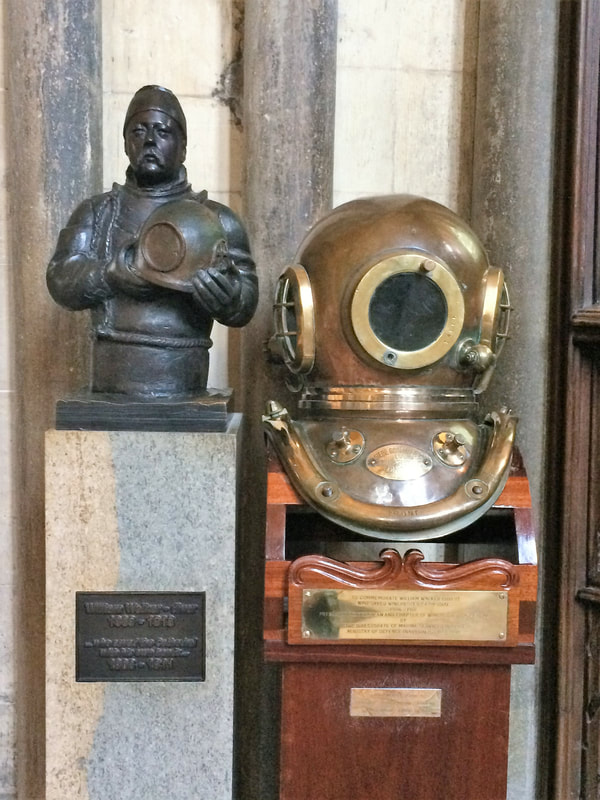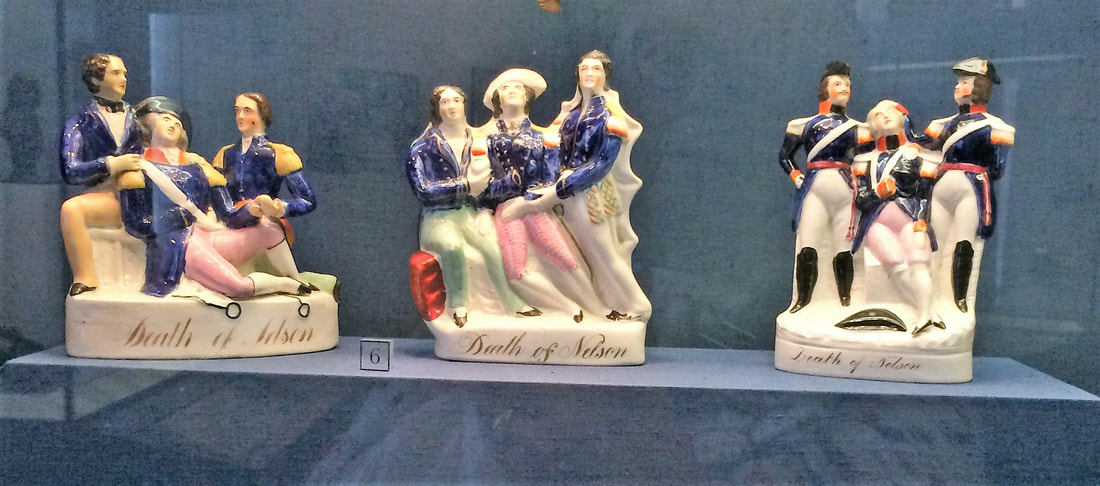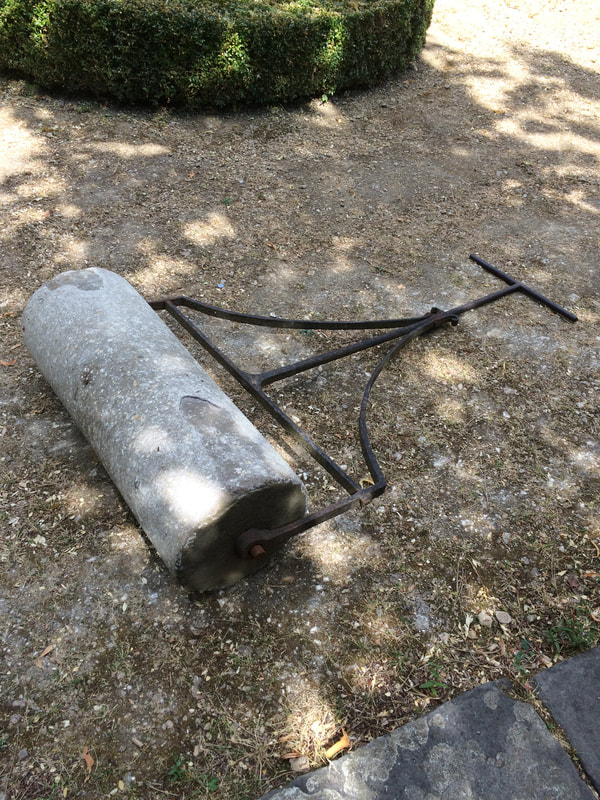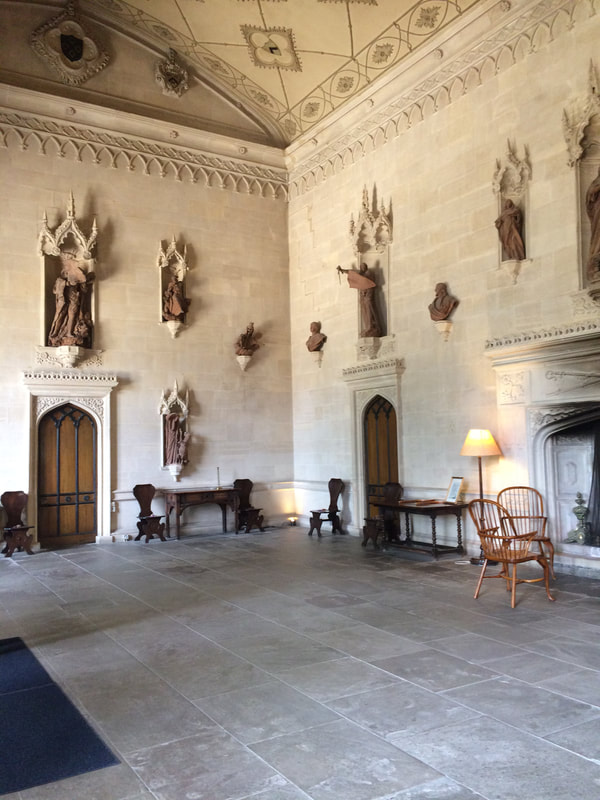|
When I travel I tend to concentrate my photographs and subsequent posts on 'large' topics such as stately homes, cathedrals, cities, and so forth. Here is something a little different...some smaller discoveries you might enjoy. Thomas Hardy (1840-1928) sits in Dorchester, the county town of Dorset. Hardy's novels were set in nearby areas; The Mayor of Casterbridge used the town as the model for Casterbridge. In Winchester Cathedral, these objects memorialize William Walker, a deep-sea diver who save the Cathedral from sinking into the wet ground on which it had been built beginning in the 11th century. Because workers could not dig underneath to buttress the stone walls without the trenches immediately filling with water, Walker, in his complete rig, worked in 20 feet of water, in the dark, to build sturdy supports that enabled the structure above to be saved. He labored for six years beginning in 1906, packing the foundations with more than 25,000 bags of concrete and 115,000 concrete blocks. He was honored in a special service of thanksgiving in 1912; sadly he died at age 49 in the influenza epidemic of 1918. In the National Museum of the Royal Navy at the Portsmouth Historic Dockyard near the flagship Victory, among the memorials to Admiral Horatio Nelson (1758-1805), are these Staffordshire pottery figures. The dying figure of Nelson is held by his Captain and a sailor in the Battle of Trafalgar. As much as he was admired, I find it hard to imagine such a grim bibelot on my parlor table. The object at left above is a gravel roller for garden paths, keeping them dry and smooth for the dainty slippers of well-dressed ladies. It can be found in the Georgian Garden in Bath. Maria Edgeworth's Inkstand has pride of place in the library at Chawton House in Hampshire. Edgeworth (1768-1849) wrote many novels, essays, and other works reflecting her Anglo-Irish heritage. Click on the photos to enlarge them. The Great Hall in Lacock Abbey was created in the 1750's in the Gothic style. Among other features, a series of terracotta figures were placed in niches around the stone walls. The particular coronet-wearing skeleton was created by Austrian artist Victor Alexander Sederbach. Striking! And spooky.
0 Comments
Leave a Reply. |
Victoria Hinshaw, Author
Archives
July 2024
Categories |









 RSS Feed
RSS Feed